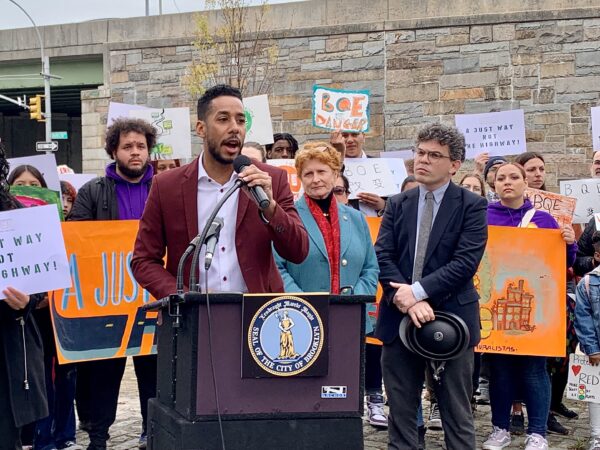BQE Environmental Justice Coalition launches, demands ‘corridor-wide’ BQE rethinking
Urges state and federal involvement

SUNSET PARK — As hundreds of trucks and cars rumbled past on Wednesday, members of numerous community organizations and elected officials gathered at the noisy intersection of Third Avenue and 16th Street in Sunset Park to officially launch the Brooklyn-Queens Expressway Environmental Justice Coalition.
Neighborhood and environmental activists came with signs and speeches. But many of them also came with inhalers for their asthma — a terrible legacy of growing up in communities divided by an interstate highway carrying more than 130,000 vehicles a day.

The coalition is demanding comprehensive measures to address the hazardous environmental and health crises stemming from Robert Moses’ highway, which cuts through the middle of communities from Sunset Park to Astoria, Queens — sparing only Brooklyn Heights with its now-crumbling Triple Cantilever section, dubbed BQE Central by the city.
